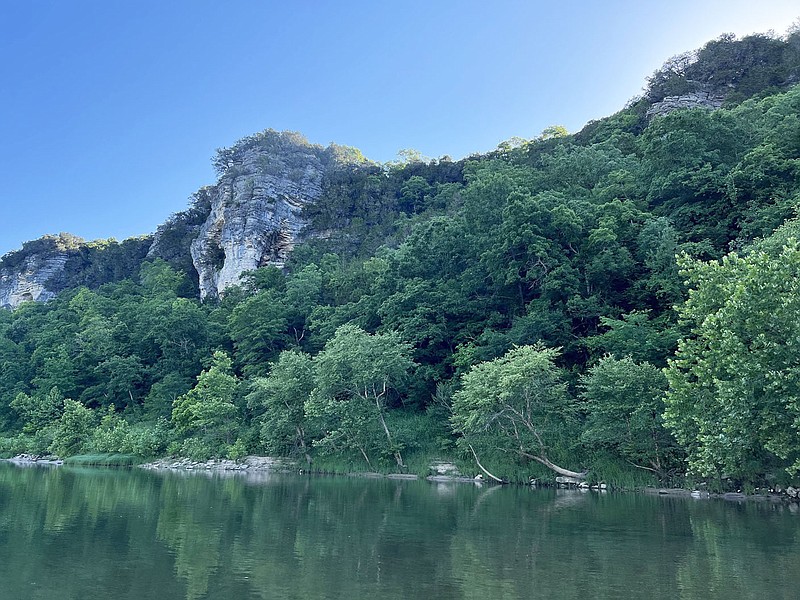"From the free-flowing waters of the Buffalo River to the rolling hills of the Ozark Mountains, Arkansas is proud to be the Natural State and enjoy clean air, land, and water.....we must continue to responsibly protect these precious resources."
-- Gov. Sarah Sanders
One of our family stories is about my grandmother's lesson on how much is too much. She was extremely proud of her Big Boy tomatoes, attributing their glory to the fertilizer she'd sprinkled around them. She figured if a little did a lot of good, a lot would be even better. Of course, more fertilizer burned those suckers to a crisp. Too much of anything will do that to you.
Probably most Arkies, after witnessing the seven-plus years of citizen sacrifice of time, money, and energy fighting to save the Buffalo River ... again, would assume that hopefully the state has learned how much is too much of a bad thing. We're about to find out. Washington County is in the crosshairs of a company whose business is food industry waste disposal. This issue is going to be an early test of Gov. Sarah Sanders' new head guy at the Arkansas Department of Environmental Quality, Caleb Osborne.
The ADEQ was the agency that in 2012 permitted a concentrated animal feeding operation of several thousand hogs in Newton County. Approving a site -- on the thin soil of Ozark hillside pastures, on top of karst limestone geology, in a delicate watershed -- alongside a tributary of the Buffalo River, the country's first national river, was not ADEQ's finest hour.
Now Washington County faces its own waste disposal threat of stuff being spread on land. A company, Synargo-WWT Inc., from Maryland has requested a permit from ADEQ to land apply approximately 12 million gallons of "residuals" in the Illinois River watershed annually. This watershed runs through part of Fayetteville westward to Tenkiller Lake in Oklahoma, a water supply to residents in that area.
The application states, "The general types of wastewater residuals generated from food and animal processing facilities include, but are not limited to, processing wash-down rinse water, DAF [Dissolved Air Flotation] skimmings, waste activated sludge, wastewater lagoon sludge, and grease trap water."
If you've ever been brought to your knees gasping from the smell of a grease trap, it would seem perhaps these folks need an air permit along with the water permit to operate. Perhaps they can perfume or process out the smell, but somehow I doubt it.
There are numerous questions that require answers. Arkansas and Oklahoma have been locked in lawsuits and bad feelings for decades over too much phosphorus flowing from here to there. This nutrient is in chicken litter, which is spread on fields as fertilizer, and when too much runs off into waterways, algae grows and chokes the life out of the aquatic ecosystem. Some types of algae can make water toxic and unusable. Why then allow yet more phosphorus to be applied in what is currently designated as a "nutrient surplus area" showing levels now as "very high?"
Taxpayers foot the lawsuit bills, water cleanup bills, land contamination bills, economic loss (like tourism) and costs associated with trying to reduce nutrients. Cities, farmers and sewer plants have been making efforts at reduction for years. Adding more nutrients to the area adds more expense to taxpayers, who essentially then subsidize such costs of doing business with public dollars as well as with environmental and human health impacts. Whose bottom dollar would be helped or hurt?
Lessons learned in the "Battle for the Buffalo" largely centered around the siting of the hog farm on soil atop limestone karst, which is a riddled rock maze of holes and passages that send groundwater ultimately into rivers and lakes. One person researching this permit thinks these Washington County fields are possibly also atop the same Boone Formation of limestone as the Buffalo area. Has ADEQ done its geologic due diligence this time on the consequences of water contamination underground to wells, springs, etc.?
Take note that in their list of the industrial residuals to be applied to land is the phrase, "but not limited to." Like with all unknowns put into air, water, and soil (and into humans too), unknown consequences will result. These waste streams vary chemically and physically and there are no guarantees anyone will know nor regulate how much is too much for this watershed to bear.
You can do something about this proposed sludge dumping. Comment at: [email protected] (refer to Synagro permit: 5383-W, AFIN: 72-02544) Comments are due before Jan. 24.

